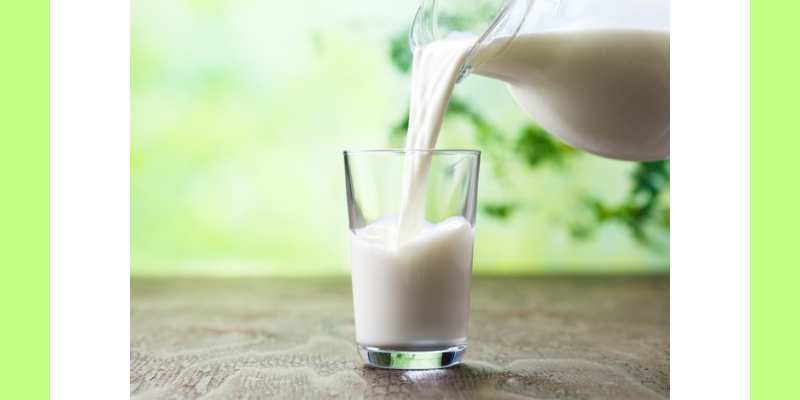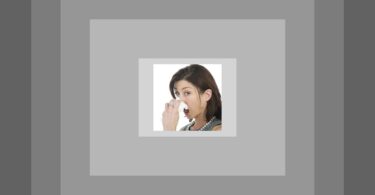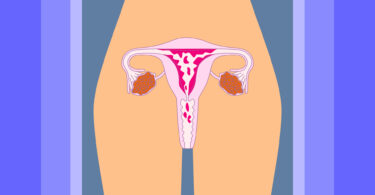A remarkable three day National Mega Seminar was held at the Birla Matoshree Sabhagriha at Marine lines, Mumbai on the 7th, 8th and 9th of September’18, organized and marketed by the team of ‘the other song’ International Academy and Clinic of Advanced Homeopathy.
It presented eminent speakers and masters in the field of homeopathy including Dr. Rajan Sankaran, Founder and Head of ‘the other song’ and his colleagues Dr. Jayesh Shah, Dr. Sujit Chatterjee, Dr. Mahesh Gandhi, Dr. Paresh Vasani, Dr. Dinesh Chauhan and Dr. Shekhar Algundgi.
The seminar gave some interesting understanding of the Lac Remedies.Dr. Massimo Mangialavori was a special guest speaker from Italy. He is an internationally renowned teacher and practitioner who has recently published a book called “Milk Remedies” based on 14 Lac remedies. The event was attended by some accomplished personalities, college principals, teachers, practitioners and students from different parts of India.
The Lac seminar was insightful and gave a broader understanding and fine differentiation between various mammal remedies. As we may have often witnessed in practice, we are restricted to a few common remedies such as Lac caninum and Lac defloratum. However, this seminar contained some fascinating information on how one could explore the other Lac remedies in practice.
Dr. Sankaran began with the introduction to the Animal kingdom and its differentiation from plants and minerals. Dr. Sankaraneli cited a list of different rubrics from the repertory that gave a holistic understanding of mammalian group of remedies that enabled him to derive the ‘sensation’ in mammals. He described a strong maternal instinct with a need to belong or be a part of a group, as one’s security lies within the group, and the price that one pays for it by submitting his/her freedom.
Besides this a strong maternal instinct, to nurture, care, protection and competition/hierarchy within the group or outside were some distinguishing features to take note of. He also quoted a few examples such asa dream of cousins, where we see 3 lac remedies- Lac humanum, Lac lupinum and Lac maternum. This could be understood further as cousins are someone who don’t belong to the immediate family but are a part of a larger family. Another such rubric was forsaken by friends where we see Lac humanum, Lac leoninum, Lac maternum; and here again we see the theme of being removed orthrown out of the group.Commonly seen problems in mammals included issues with menses and lactation.
With that introduction, we had Dr. Massimo Mangialavori on the dais. He came witha systematic organization of his cases and gave a brief overview of his method, based on the extensive research over 33 years of clinical practice, and on clinical results of cases he had cured using those remedies. He broadly classified lacs based on:
- Wild and Domesticated
- Prey and Predator
- Nipple
- Chemical components
- Pregnancy period
- Number of babies
- Size of the head
- Mammals taxonomy
He stressed the issue of headaches commonly seen in mammals, different sizes of their heads, the position of nipples wherein for some it is located on the chest and some over their abdomen. He identified different characteristic themes among mammals and established a better understanding with human expressions. He gave some interesting insights into remedies like Lac assinum, Lac glama, Lac equinum, Lacovis.
He meticulously explained expressions of each of them where in Lacassinum we get the impression of someone going through intolerable suffering, yet one continues to bear it. They act dumb and annoying, but that is a way of seeking attention from the group. We see here passive aggression, self devaluation, not as good as others which is seen in the rubric ‘Delusion-he is doing useless work’.
Next we see Lac glama where there is similar kind of suffering like in Lac assinum, but here they are more resilient, enduring and also we see stoicism. They are revolutionary but they show they can endure whatever you do to them. Here the idea of being a revolutionary is inside and not outside, and the feeling is, “You can torture me but you cannot change me from inside.” Also, a strong sense of oblativity, which is being conscious of one’s sense of duty and service.
Lac equinum on the other hand possesses s strong sense of duty and can never go against the will of his master. You can see someone who is honest, intelligent and submissive to his master.When one sees his values match with his master then he completely devotes himself. Lac ovis possessing a sense of conformity and doing what the masses do. These people are highly irresolute about everything and go where the tide goes. Not having a mind of their own and want to be identified in the crowd so their survival is through camouflage. Clinically correlating, we see wandering and migrating pains, disorientation just like in the mind state.
In the second half, Dr. Paresh Vasani described a case of a 24-year-old woman who came with belching, acne and difficulty in communicating. She received Lac defloratum as her remedy, portraying the qualities of a meek, helpless and nervous person with no say or choice of her own. This case stresses the hand gestures made by the patients while describing a particular phenomena. She beautifully showed circular motion of her finger to depict boredom from a mundane job.
As a known fact cows were used to Plodder in the fields and went round and round for hours together doing the same work all day. This observation was used to confirm her remedy with her fundamental feeling of being abused, tortured, troubled, dominated and suppressed by someone superior which as a whole fit the mammalian theme. Dr. Vasani emphasized going to the level of experience and source in case-taking, which then enables us to locate a simillimum which gives healing at the deepest level. Dr. Vasani also shared insights into the survival (prey and predator) qualities of mammals.
To conclude and summarize the first day, we had Dr. Sankaran who gave a comprehensive understanding of the proving she conducted of remedies like Lac caprinum, Lac defloratum, Lac leoninum and Lac humanum. Some interesting highlights from the same are as follows.
- Need for space seen in Lac caprinum was very marked with fear of sharp teeth, sensitivity around the neck, butting, need to push to create his space, and need to go to a higher place for safety were some of the distinguishing features.
- Theme of dirty, abuse, violence, helpless, being neglected, fear of sudden danger with horror of shut places were some symptoms that came in the proving symptoms of Lac defloratum.
- Desire to smash, crash, pounce and jump were some of the words the provers of Lac leoninum Here we see someone who is highly ambition, will fight to finish and not submit.
- Conflict between spiritualism and materialism, of selfishness versus selflessness, or doing things for themselves versus doing for the community, were important themes seen in the proving of Lac humanum.
The first day was beautifully concluded by asong sung by everyone for mankind which talks about creating unity among people and that there will be a day where people will walk together hand in hand in the interest of each other.
The journey to learning on the second day began with Dr. Jayesh Shah who presented a case of a 40-year-old mother, dentist by profession suffering with profuse menses, fibroids, varicose veins and a lot of emotional and mental complaints. She was anxious about her daughter who was suffering from SLE (systemic lupus erythematosus). Through the case, he explained the concept of the mammalian brain which has primarily to do with the limbic system which controls our emotions and feelings. Her qualities of being resilient, enduring as much pain as possible, being calm in difficult situations, idealism, care-giving and resourcefulness along with a feeling of being trapped in an emotional urge to help, indicated Bubalus bubalis (remedy from buffalo milk)in her case. Dr. Shah also said that the main sensations in this remedy as seen in several cases are a pulled down, dragging, lodged down sensation. This aspect was confirmed in the patient’s experience in her chief complaint where she experienced the pain as something being dragged and pulled down.
In Indian culture the buffalo’s milk is widely used for drinking and preparing milk products like ghee and curd. Therefore, he believes this medicine could be of great use in Indian homeopathic practice. Interestingly, in this case the patient had increased sensitivity towards odors during her pregnancy where she could easily smell ghee being used in neighbor’s house or curd turning sour from a distance. Dr. Shah finely differentiated other remedies from the cattle family such as Lac defloratum, Lac vaccinum, Lac vaccinum coagulatum, Lac vaccinum flos, Lac oxinum and Lactic acid. In his understanding, we see a lot of abuse, violence, torture in Lac def wherein the person succumbs to the pain often leading to depression and loneliness, whereas in Bubalus bubalis we see a lot of resilience, strength to endure and withstand pain and suffering.
He spoke about another case of a young woman with PCOD. She came with intense state of anger with trembling of hands. Her main experience was a lot of vocal abuse from in laws, being ill-treated, unwanted and controlled. She was constantly demeaned and rejected due to her obesity. She had violent fights with her husband where she would strike him. She felt unloved, uncared for and rejected by her husband, in-laws and parents. She felt her parents got her married early as they didn’t want her.
She received Thyroidinum (medicine prepared from the thyroid gland of sheep or cow). Chronic persecution, chronic neglect, void, hateful, great violence, fights, hysteria, quarrelsomeness, disgust with themselves, self-violence are some of underlining symptoms of this remedy. Interestingly she had dreams of a joker; wicked joker making evil faces at her, smiling with dirty looks, scaring her and haunting her, so the persecuted feeling was not only at the emotional level but also at the dreams or delusional level. The thyroid gland is a composition of ammonia, hydrogen, carbon, oxygen and iodine. This justifies the attachment with parents like in ammonia and carbon, the violence and persecuted feeling like in nitrogen and the intense hate and anger seen in iodine.
After the two vivid cases by Dr. Jayesh Shah, Dr.Sujit Chatterjee took over the dias. He presented a case of a lady diagnosed with oligodendroglioma who came with left sided jerks on account of the right sided tumor. A perfectionist by nature, loving and extremely hardworking person who could pull off 18-20 hours of work a day with her main feeling of being dominated and oppressed by people.
She felt taken advantage of and that she was useless and worthless and worked harder and harder to compensate that. She received Lac assinum (donkey’s milk) for the feeling of being worthless, stupid, inferior, helpless, forsaken and dreams of travel. Other symptoms included dreams of snakes, suffered wrong, confusion and obedient. A symptom worth taking note in Lac assinum is they are sure-footed as they travel long distances with heavy loads on them. We also see lot of repressed anger in this remedy as seen by Dr Massimo, which was understood very well in the patient’s dream of blasts at petrol pump with barrels blasting.
The second half was taken over by Dr. Mahesh Gandhi, who showed a case of Rattus rattus given to a boy who came with this feeling of being primitive and others are bigger than him and he is small. He had dreams of being black and was being thrown out of a black community. He had fear of snakes and worms.
When he was asked to describe his doodle (a scribble on paper that does not have any structure but is spontaneously done), he felt as though he was trying to climb a sky-scraper but was unable as he was too small and could not hold tightly. Some interesting facts about Rattus rattus are love for food; they are very close to humans, constantly nibbling or munching on whatever they get and being clever. He highlighted some proving symptoms of the remedy conducted by Dr Jayesh Shah as follows:
- Insensitivity, want of urgency, not feeling suffering of others, indifference
- Sexual immorality, increased desire
- Fear of narrow and hot places
- Fear of being caught
- Fear being alone
- Fear lonely places
- Fear of being lost
- Rejected by others
- Instant gratification
- No sense of hygiene
Another case he described was of a 23 year old woman who came with difficulty in communication, maintaining eye contact and state of intense fear before every semester. She was afraid she will go mad as her brother was already suffering from depression and she felt she may fall a victim too. She experienced this feeling every time she would approach her exams and soon after they were over she would feel fine.
An incident of her father suffering from myocardial infarct in childhood brought about a similar state of feari n her. The fear was of being kidnapped in the absence of her father. Irresolution over trifles, confusion about her sexuality, fear of separation from family, fear of being kidnapped and other mammalian qualities indicatedLac ovinum (sheep milk)in her case on which she did beautifully.
As explained by Dr. Massimo, Lac ovis do not use their own minds and rely on others for their decisions. They donot have their individuality and their survival mechanism is by camouflage. Defenseless, naïve, innocent, easily influenced, shy, withdrawn, feeling of inadequacy, changeable, desire to conform, stupidity, vulnerability, exhausted, forsaken are some of the expressions one can look for when thinking of Lac ovis.
The third and the last day of the seminar kicked off with Dr. Dinesh Chauhan, where he shared a case of ankylosing spondylosis in a 50-year-old male. One of the most interesting and gripping cases was of a highly ambitious business man, who apparently wanted to be the biggest and achieve the highest position in his business and on the other side, was a very aggressive, powerful and revengeful person capable of smashing anyone in front of him.
With a killer instinct, facing every situation fearlessly and not running away from it, trying to overcome every problem coming his way with bravery and agility, his entire life story was inspired by thehoney badger. His thoughts and actions in every difficult situation of his life were influenced by the honey badger. He further spoke of how at every stage of his life he had applied the principles of the honey badger and succeeded in his strategies and how he also uses them to overcome problems in his business.
He received Meles meles (prepared from the blood of honey badger) as his remedy. Being unbiased and open to any possibility in the case is something worth learning here. A practitioner should not be fixated on the remedies known to him but be prepared for the unknown and always check for the bit that does not fit.
The art of case taking to pick up the verbs/action words described by the patient and taking it further from there was beautifully elicited by Dr. Shekhar Algundgi through a spectacular case of PCOD in a 25-year-old woman. Her only desire in life was to be a mother and have lots of children, twins, triplets and quadruplets and featured a strong maternal instinct. She felt dominated by her father in law with a lot of anger, vehemence and desire to kill him and rip him apart.
It is interesting to see how Dr. Shekhar puts himself in the background and modulates his voice to a very soft tone in order to bring out the state of the patient.In the experience level, the patient describes herself as the ‘king of the jungle’, where nobody but she can have their say, and everyone around her is supposed to be submissive with feelings of being a super thing where nobody can come near her.
Further she talks about claws, pouncing, roaring loudly out of anger, ruling the jungle, being the ultimate, glowing like a powerful lion, being the supreme most, one who cannot be challenged, pride and potency, breaking the den and coming out and so on… on the basis of which she received Lac leoninum as a remedy. Interestingly in her dreams, she saw herself kissing, cuddling and patting lions as though they were family. She felt a sense of comfort and pride in the dream. Another aspect to learn from this case was even if you are very clear about the remedy in one area, for example at the level of delusion, it is very important to check if it were coming up in other areas of the patient’s life. This will certainly help us be surer of the remedy.
His second case was of a 28-year-old woman with tendency to day dreaming. Using the Sensation method, Dr. Shekhar elicited her experience of being a small burrowing creature residing in a cave or hole-like structure. Bushy furry tail, blind like a mole, burrowing, hidden, weak and defenseless were some of the source words for which she got Mephitis as her remedy.
In the second half, we had Dr. Massimo again to speak about Lac loxodonta Africans(African elephant) and Lac suis(pig). His understanding of Lac loxodonta Africans was of someone who has to give up upon his own will and desire for the sake of community. The community for him is stability, security and protection and that they are nothing without it. Some distinguishing features are solidity, heaviness, slowness, inhibited anger, fullness, retention etc. In case of Lac suis we see lot of avoidance, opposition, victimization, outcast feeling, anger and impotency. They seek pleasure through food. There is a need to feel free and liberated in whatever they do and they do it in a bombastic fashion. For example eating, having sex, working etc.
The last segment of this phenomenal three day seminar was taken over by Dr. Sankaran to summarize the story on mammals. His key to a successful prescription was to ‘Be sure and exact’. He also stressed that the state could be expressed in the pathology, symptom, mind, dream, situation and fears and that each of them should be thoroughly examined to get a complete picture of the patient.
With that, he presented a case of a 45-year-old male with eczema. Strong sense of justice, fighting for the nation, family of freedom fighters, the stronger bullying the weaker and taking advantage like the boss treats his employee were some of his expressions. He received Lac humanum which has the conflict between being a career builder, someone who thinks about earning and living for himself and a nation builder,one who works in the interest of the nation.
With this wonderful case, he concluded the seminar with a song with resonance to the song of Lac-humanum, ‘Vaishnava jana to tene kahiye re pir parayi jane re’ which means call those people who feel the pain of others and help those in misery but never let self-conceit enter their mind. The audience joined in and the humanitarian feeling echoed in the hearts of every member present.
This seminar was an enriching experience filled with great knowledge, healthy interaction between the teachers and students, discussion and sharing of cases between the masters. Different approaches and methodologies came together in the interest of homeopathy, homeopaths and patients.
About ‘the other song’: At ‘the other song’ International Academy and Clinic of Advanced Homeopathy, there are a group of experts treating and teaching patients and students respectively where students get the opportunity to witness live cases and understand the thought process and analysis of the doctors. This center is one of the best places for vocational training where students and practitioners can sharpen their skills, exchange ideas, acquire clinical and in-depth training from the world’s most renowned doctors in homeopathy.




